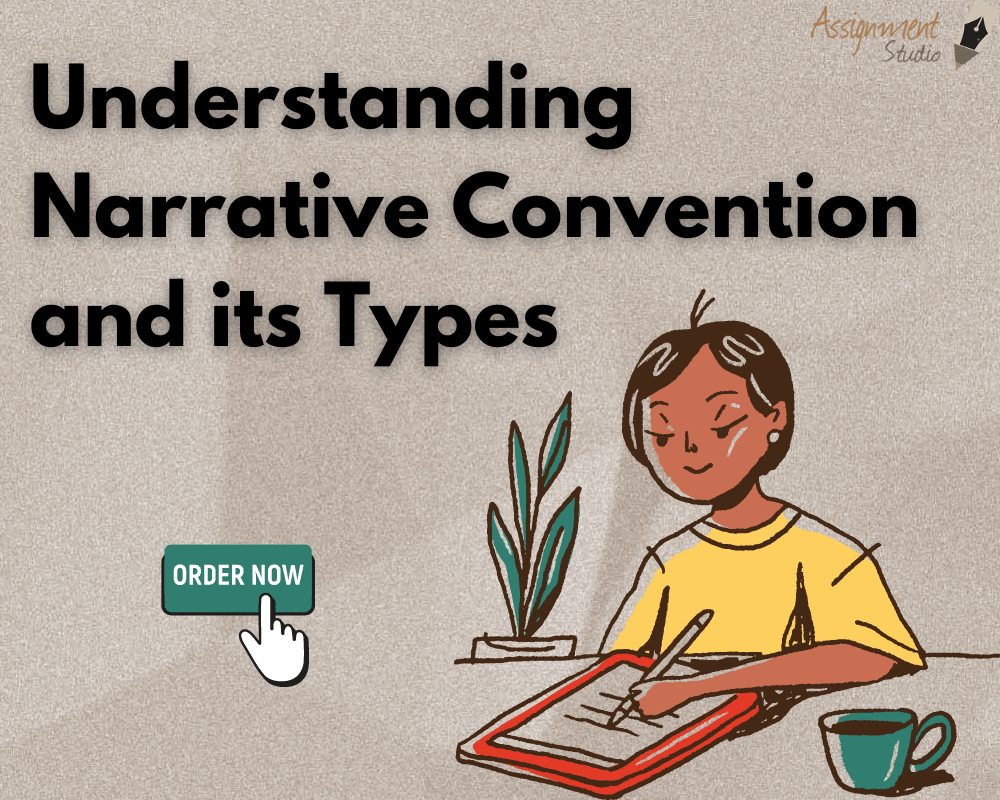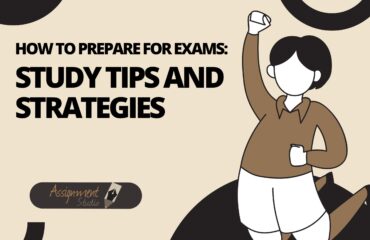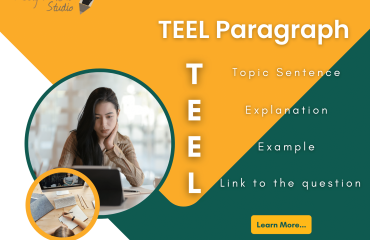
In this blog, you are going to learn about what narrative conventions are and why they are important. Narrative conventions are literary techniques used by writers to create meaning in a story. They are generally used in literature to give contextual flow to the story. Generally, most literary work like novels, stories, dramas, narratives, poetries, etc utilises the tools of narrative conventions.
Narrative conventions are categorised as primary and secondary narratives.
Table of Contents
Secondary and Primary Narrative Convention
The primary narrative conventions have a broad impact on the entire literature, whereas secondary narrative conventions influence only a small portion of it. It is dependent on the writer’s ability to figure out when and how to use the primary and secondary tools of narrative conventions.
Primary Narrative Conventions
-
Conflict
- Against the Society
- Self
- Another Person
- Environment
-
Setting
- Destination Setting
- Period Setting
-
Theme
- Core Theme
- Motifs
- Symbol
-
Plot Development
- Denouncement
- Exposition
- Falling Tension
- Complication
- Climax
-
Descriptive
- Figurative Language
- Imagery
- Sensory Imagery
-
Character
- Antagonist
- Protagonist
-
Characterization
- Interaction and Relationships
- Appearance
- Thoughts
- Behaviour
- Dialogues
-
Point of View
- First Person
- Second Person
- Third Person
Primary Narrative Convention: Conflict
By utilising this tool of story convention, the author can show the conflict between two or more characters. There are different types of conflicts, let’s discuss each:
-
Against the Society
This type of conflict arises when the protagonist stands against the man-made wrong. The cases like crime, moral appropriation etc are some of the major factors which cause conflict with the character in the literature. It is the protagonist who frequently enters into a conflict with society, in the literature.
-
Self
When the character is in conflict with his own psychological process, this tool of the narrative convention is the most appropriate one to be used. In this form of conflict, the writer usually signifies a situation when the character is in a dilemma to choose between good and bad. This tool also helps the writer to create a more dramatic plot.
-
Another Person
This tool is used usually when the conflict is between the protagonist and antagonist; they could be involved in either direct or indirect conflict. The writer is required to display a strong feeling of hatred between the characters.
-
Environment
This type of conflict arises when a man is not able to achieve his target due to natural interference. Using this narrative convention tool, the impact of natural disasters on the characters may be shown. Troy and Odysseus could be this narrative convention’s example.
Primary Narrative Convention: Setting
Settings are of vital importance and have a crucial influence on the story, characters, themes and overall narrative conventions of a specific story. There are two types of settings:
-
Period Setting
It is the period in which the story takes place. The time setting could be any time of the day, season or period in history.
-
Destination Setting
It is a place where the story is taking place. Writers chose a location when writing the story to portray the complete story.
Primary Narrative Convention: Theme
-
Core Theme
The whole narration of the literature is based upon the core theme. The theme of the literature determines the tone and style.
-
Motif
Motifs are aspects that appear repeatedly in the tale and have a strong contextual significance.
-
Symbol
The symbol represents an object, character and place which has some kind of importance and meaning to the plot. Symbol allows readers to think about the story from a different perspective.
Primary Narrative Convention: Plot Development
-
Denouncement
It is the last stage of literature and it is also known as the conclusion. In this part, the writer goes through all the events that happened in the earlier part of the story and their side effects. It depends on the writer’s ability and style of writing, whether the writer could give the reader a satisfactory conclusion in the denouncement part of the literature.
-
Exposition
Also known as the introduction, this could be classified as the initial section of the narrative. In this section, the writer makes a good effort to introduce the character, context, setting, etc.
-
Falling Tension
This stage leads to the conclusion of the whole literature, the end results are already revealed by this point and the tension between protagonist and antagonist significantly decreases in this stage of the literature.
-
Complication
In the stage of complication, several conflicts are presented, and the intensity of the narration increases in this section of literature. The characters’ status quo is disrupted, and the reader gets a sense of what could happen later in the story.
-
Climax
This is the turning point of the literature in its third stage. The readers get to know if the odds are in favour or against the protagonist.
Primary Narrative Convention: Descriptive Language
The literary tools under the descriptive language are used to increase the readers’ engagement level with the literature. By using the tools of descriptive language the writer tries to write by matching his style of writing and perception to the taste of the reader.
-
Figurative Language
Figurative language is a method used to improve the quality of writing and assure the reader’s engagement with the writing. Figurative language refers to tools that are utilised to express hidden meaning rather than literal meaning. Hyperbole, simile, personification, etc should be used by the writer to apply the figurative language.
-
Imagery
The tool of imagery is used by the writer to create a visual image of a particular scene for the audience. It is one of the most useful narrative convention tools to be used that comes under the classification of descriptive language.
-
Sensory Imagery
Through the help of sensory imagery, the writer tries to appeal to the intelligence and feelings of the audience.
Primary Narrative Convention: Character
Under the classification of characterization, comes the term that is used to describe the characters of the literature. The two terms that are commonly conducted for characterization are the antagonist and the protagonist.
-
Antagonist
The antagonist is the story’s negative character or villain. The antagonist’s preferences and actions would be completely contradictory to those of the protagonist. The author attempts to portray the character in a negative light in order to instil hate and disgust in the readers.
-
Protagonist
The protagonist is the main hero who leads the storyline and it is the character around which the whole story revolves. The activities and decisions made by the protagonist set the course of the entire story.
Primary Narrative Convention: Characterization
This narrative convention is the tool through which the writer tries to create a bond between the reader and the character. There are two types of characterization:
-
Direct Characterization
The writer directly introduced the character in the storyline to the readers.
-
Indirect Characterization
The introduction of the character is done subtly, and the readers are encouraged to derive their own perceptions of the characters.
Interaction and Relationships
The character’s personality and temperament are determined by examining the relationships he or she maintains with other characters in the plot.
-
Appearance
The appearance of the character can tell a lot about their personalities. The aspects that could provide clarity of the characters are body language, clothing, etc.
-
Thoughts
The thoughts, fear, insecurities, beliefs, perception, etc. could provide high clarity of the character to the readers.
-
Behaviour
The behaviour of the character is the gateway to knowing their true identity and it reveals a lot about the environment from where the character comes from.
-
Dialogues
By analysing the dialogues, readers can understand a lot about the character, such as their brought up, family background, etc.
Primary Narrative Convention: Point of View
-
First Person
The protagonist is the narrator of the whole storyline in this approach. The use of the first-person pronoun and the reflective explanation could be seen in this approach.
-
Second Person
In this approach, the story is narrated by a narrator. The writer assumes himself as the constant presence on every occasion of the storyline.
-
Third Person
It is similar to second-person narration, but the narrator knows everything about the characters and can provide justification from each perspective. The pronoun they, she, he, etc. could be seen in the third-person narration.
Secondary Narrative Conventions
- Tone
- Character Development
- Mood
- Voice
-
Tone
The style of the author could be determined by the tone of the narrative in particular narrations. The author could write the story in any tone as per their want. The tone of the storyline depends heavily on the point of view, if the story is told from the first-person point of view then you will know firsthand what the character is feeling without the perception of other characters but if a third-person point of view is used then the tone will be calm and neutral. The writer can grab the attention of the audience if the appropriate tone is used in a particular scene.
-
Character Development
Without character development, the storyline becomes boring and lifeless. The engagement of the audience is only guaranteed if the character development is done properly and systematically.
-
Mood
Readers often confuse mood with the tone of the literature. The mood is the psychological atmosphere created for the audience by the narration. The efficient use of descriptive language techniques such as imagery may be used to manage the mood of the literature.
-
Voice
The major theme, ideologies, messages, etc. are delivered to the audience could be termed as its voice. Just by analysing the voice of the literature, a reader can understand the original intention and thought process of the writer.
We have covered both primary and secondary narrative conventions in this blog and we hope that you understand that the primary narrative convention can be seen throughout the literature and the secondary narrative convention can only be used in limited places.
Need Assignment Help?
In case, you are looking for someone to help you with your assignment. Assignment Studio is the best choice for you. We are an online assignment help service with extensive experience in academic writing. Our expert writers has a strong track record and will deliver quality writing at a nominal price according to the requirement of students.
So give us a try and you will not be disappointed.






